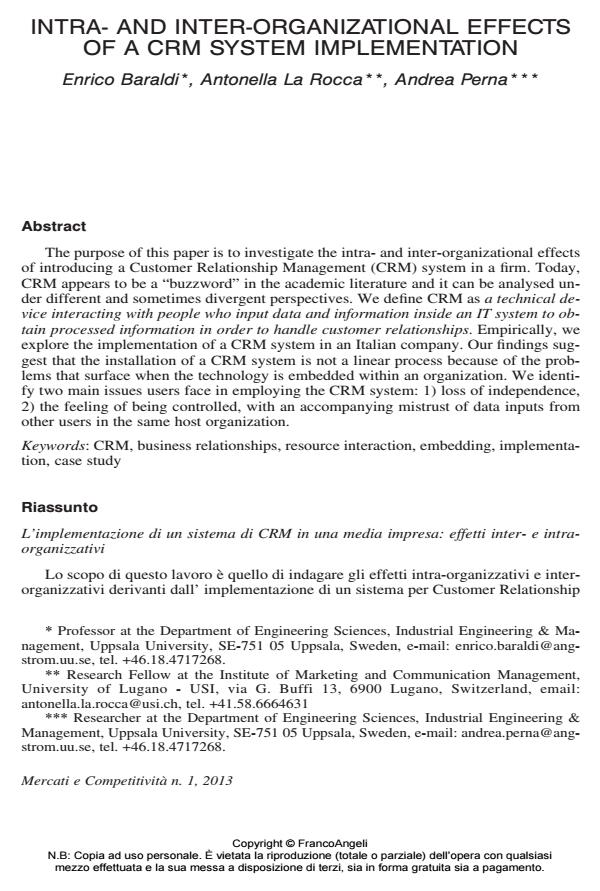Intra- and inter-organizational effects of a CRM system implementation
Titolo Rivista MERCATI E COMPETITIVITÀ
Autori/Curatori Enrico Baraldi, Antonella La Rocca, Andrea Perna
Anno di pubblicazione 2013 Fascicolo 2013/1
Lingua Inglese Numero pagine 22 P. 13-34 Dimensione file 1559 KB
DOI 10.3280/MC2013-001003
Il DOI è il codice a barre della proprietà intellettuale: per saperne di più
clicca qui
Qui sotto puoi vedere in anteprima la prima pagina di questo articolo.
Se questo articolo ti interessa, lo puoi acquistare (e scaricare in formato pdf) seguendo le facili indicazioni per acquistare il download credit. Acquista Download Credits per scaricare questo Articolo in formato PDF

FrancoAngeli è membro della Publishers International Linking Association, Inc (PILA)associazione indipendente e non profit per facilitare (attraverso i servizi tecnologici implementati da CrossRef.org) l’accesso degli studiosi ai contenuti digitali nelle pubblicazioni professionali e scientifiche
The purpose of this paper is to investigate the intra- and inter-organizational effects of introducing a Customer Relationship Management (CRM) system in a firm. Today, CRM appears to be a "buzzword" in the academic literature and it can be analysed under different and sometimes divergent perspectives. We define CRM as a technical device interacting with people who input data and information inside an IT system to obtain processed information in order to handle customer relationships. Empirically, we explore the implementation of a CRM system in an Italian company. Our findings suggest that the installation of a CRM system is not a linear process because of the problems that surface when the technology is embedded within an organization. We identify two main issues users face in employing the CRM system: 1) loss of independence, 2) the feeling of being controlled, with an accompanying mistrust of data inputs from other users in the same host organization.
Lo scopo di questo lavoro è quello di indagare gli effetti intra-organizzativi e interorganizzativi derivanti dall’ implementazione di un sistema per Customer Relationship Management (CRM). In questo studio gli autori definiscono il CRM come uno strumento informatico che interagisce con gli utenti i quali inseriscono dati e informazioni all’interno dello stesso per ottenere informazioni processate al fine di gestire le relazioni con i clienti. Empiricamente gli autori esplorano il caso di una media impresa italiana. I risultati di questo studio indicano che l’implementazione di un sistema di CRM non segue un processo lineare a causa dei problemi che emergono quando la tecnologia viene introdotta nell’organizzazione. Gli utenti riscontrano due problemi principali nell’utilizzo del CRM: 1) la perdita dell’indipendenza, 2) la sensazione di essere controllati e la sfiducia verso l’immissione di dati nel sistema da parte di altri utenti della stessa organizzazione host.
Parole chiave:CRM, relazioni industriali, interazione delle risorse, implementazione IT, diffusione IT, case study
Enrico Baraldi, Antonella La Rocca, Andrea Perna, Intra- and inter-organizational effects of a CRM system implementation in "MERCATI E COMPETITIVITÀ" 1/2013, pp 13-34, DOI: 10.3280/MC2013-001003